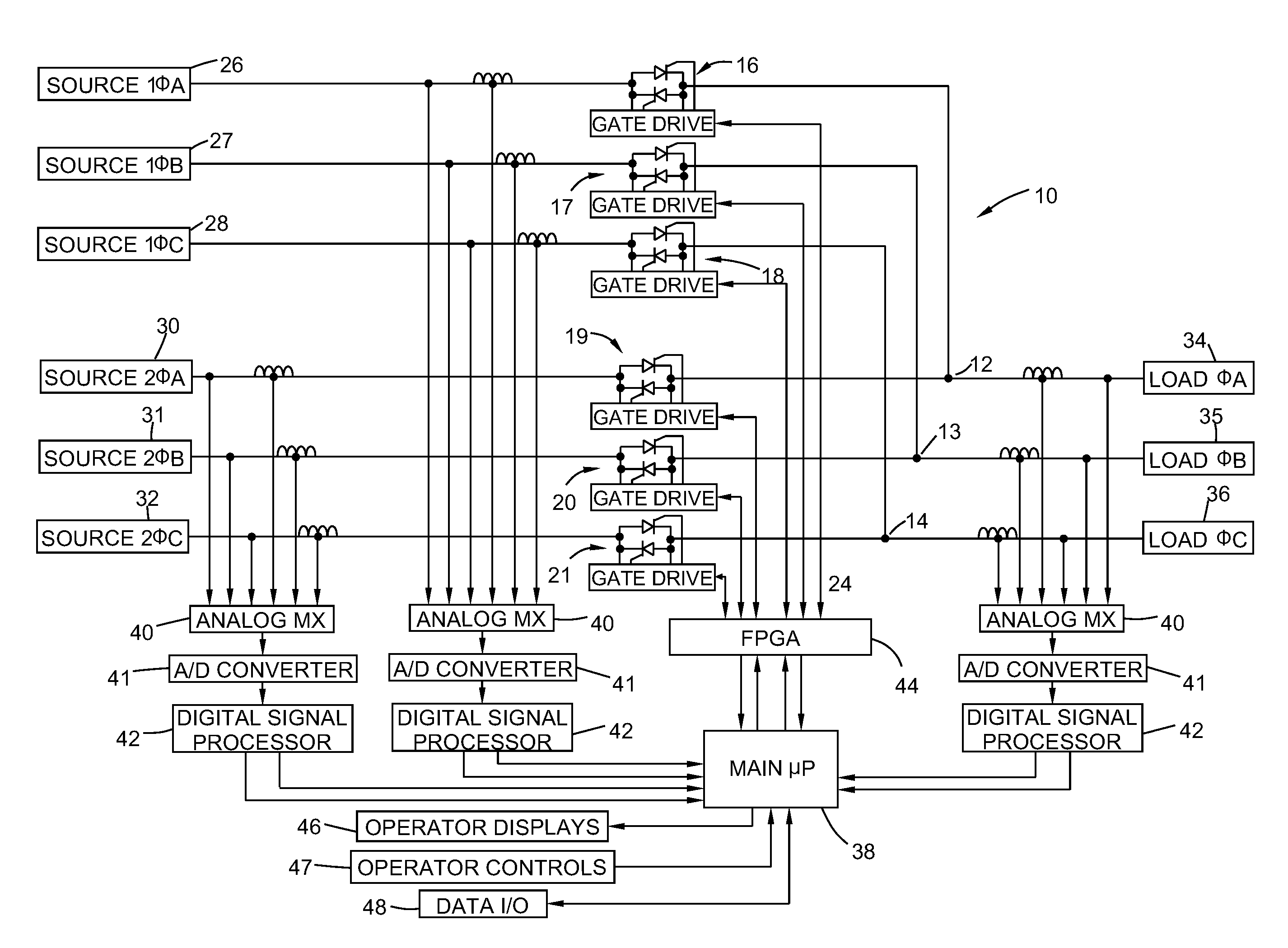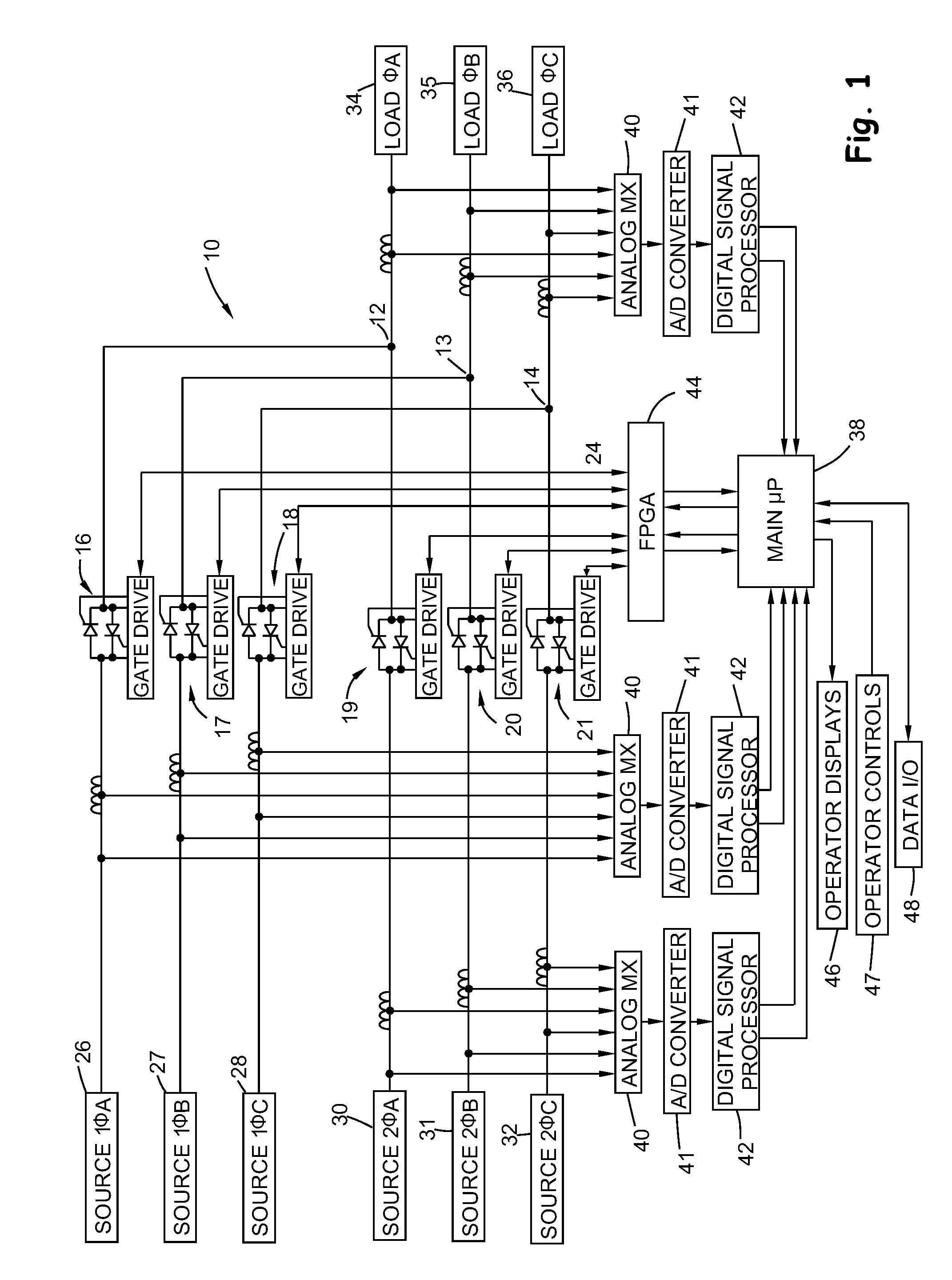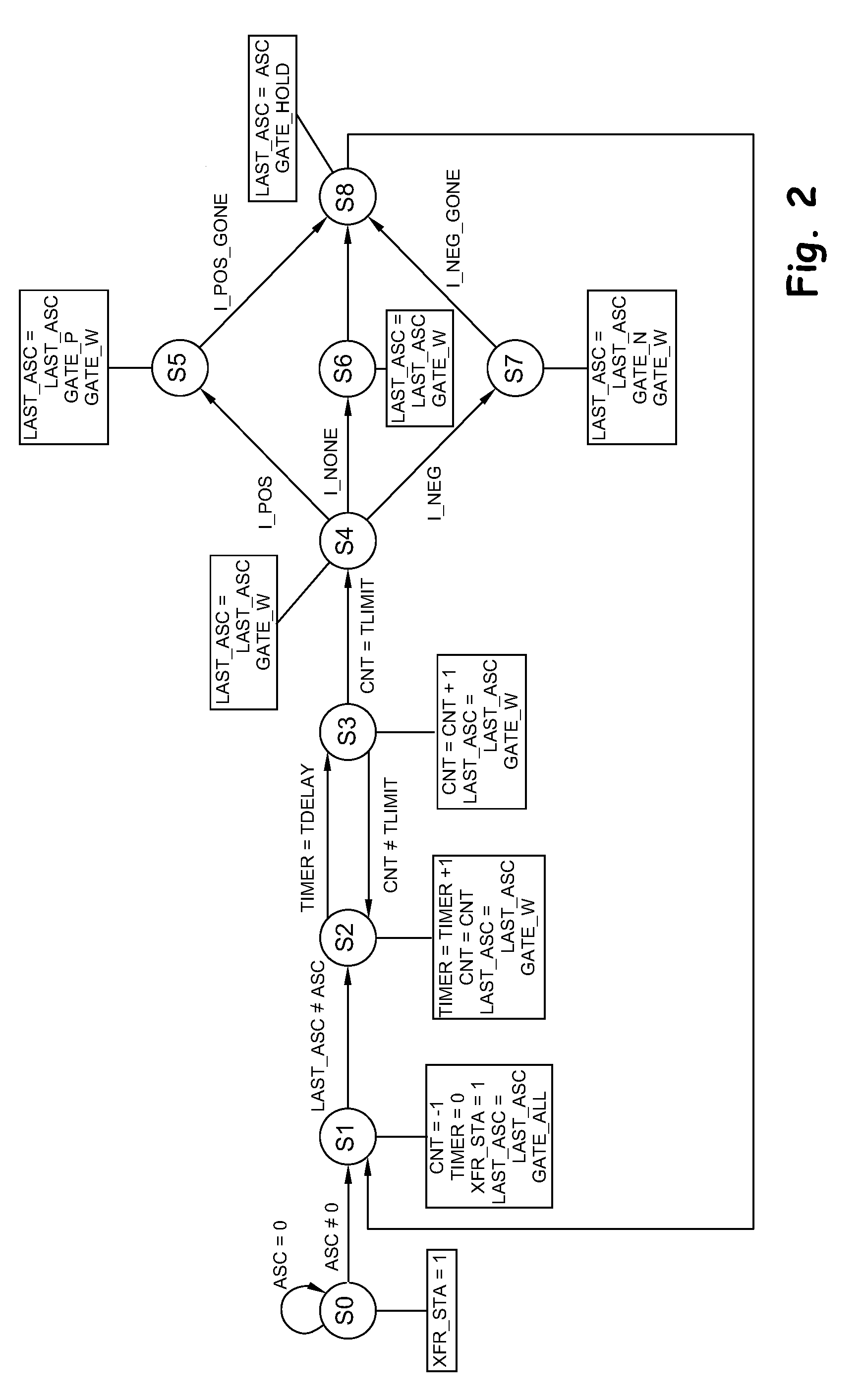Source phase sensitive transfer method and apparatus
a phase sensitive and source technology, applied in the direction of magnetostatic bodies, emergency power supply arrangements, cores/yokes, etc., can solve the problems of catastrophic consequences for the electrical power system of the facility, the potential single point of failure of the transfer switch in the system, and the inability to ensure the phase of the voltage waveform provided by each source, so as to reduce the amount of delay time
- Summary
- Abstract
- Description
- Claims
- Application Information
AI Technical Summary
Benefits of technology
Problems solved by technology
Method used
Image
Examples
Embodiment Construction
[0026]Referring more particularly to the drawings, and initially to FIG. 1, there is shown a block diagram of a control system 10 that controls application of power to a load 34-26 from either of two alternating current power sources 26-28 and 30-32. The control system 10 of FIG. 1 illustrates use of the invention with a three-phase power delivery system that has the capacity to switch two alternate power sources to a load under varying conditions. One possible use of the system 10 depicted in FIG. 1 is in a large computer center where it is important that at least some of the electrically powered equipment not lose power and hence a backup power is made available. Preferably, the system of the present invention is configured to handle two or more alternate power sources with three or more phases in each source, and the preferable system can handle as many as three different alternate power sources, each of which may have as many as five phases. However, for the purposes of simplify...
PUM
 Login to View More
Login to View More Abstract
Description
Claims
Application Information
 Login to View More
Login to View More - R&D
- Intellectual Property
- Life Sciences
- Materials
- Tech Scout
- Unparalleled Data Quality
- Higher Quality Content
- 60% Fewer Hallucinations
Browse by: Latest US Patents, China's latest patents, Technical Efficacy Thesaurus, Application Domain, Technology Topic, Popular Technical Reports.
© 2025 PatSnap. All rights reserved.Legal|Privacy policy|Modern Slavery Act Transparency Statement|Sitemap|About US| Contact US: help@patsnap.com



